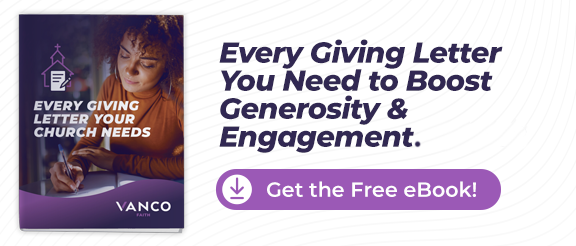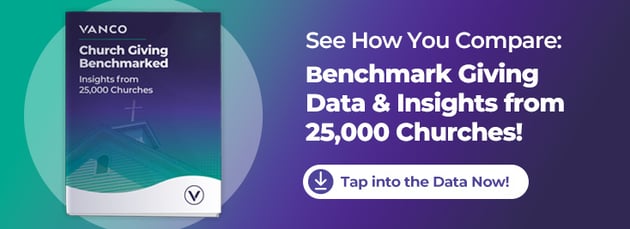
Here's a wild stat: Recurring church givers donate twice as much annually as non-recurring givers. That's from a giving study of 25,000 U.S. churches. Why? Because automated church donations make giving simple, predictable and stress-free. Church financial planning becomes easier. Church stewardship programs thrive. And the best part? Your members actually prefer it. Want in? Here's how to make it happen.
Recurring donations, also known as recurring giving or monthly giving, are a fundraising structure used by many churches. When recurring donations occur, parishioners or church members commit to making regular, ongoing contributions. Instead of making a one-time donation, donors opt to give a fixed amount of money at regular intervals, such as monthly or annually.
Today, many churches offer the option to make recurring donations online instead of with checks or cash. This gives their members the freedom to manage their donations at home, letting them choose when the donations are taken from their accounts and giving them more control over their finances.
Table of Contents
- Benefits of Recurring Donations for Churches
- How Recurring Donations Work
- Strategies for Encouraging Recurring Donations
- Addressing Common Concerns About Recurring Giving
- How Can We Convert One-Time Donors Into Recurring Givers?
- How Can We Measure and Improve the Impact of Our Recurring Giving Program?
- Implementing Recurring Donations with Vanco
- Success Stories
- FAQs
- Free eBook: Unlock the Secret to Successful Stewardship
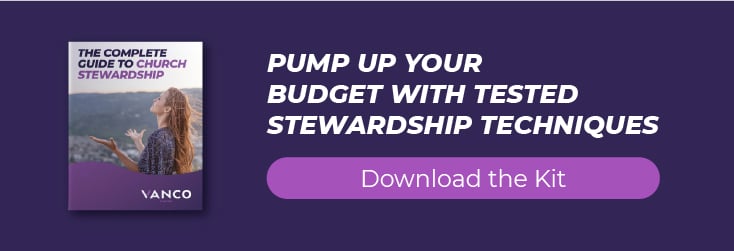
What Are Recurring Donations?
Recurring donations are a key part of many modern faith-based organizations’ financial strategies. Church members can donate at their leisure rather than at the set time of service, promoting a more convenient process.
Recurring donations are nothing new; when you look at the history of faith-based organizations, regular monetary contributions have always been important. (Even the Bible talks about tithing!)
Recurring donations occur weekly, monthly, or annually. They differ from one-time donations, which are typically one-and-done.
A recurring donation is typically made through an automated process. When people give to your church, they will have the option to check off a box, allowing them to enroll in recurring donations. They can choose weekly church offerings, monthly or annual donations and the donation amount.
Once the box is checked, automated systems automatically withdraw money from the account regularly. This system saves the church from setting up transactions for each payment and saves the donor the hassle of filling out a form whenever they want to donate.
Benefits of Recurring Donations for Churches
A Lifeway study reveals that 29% of pastors say they aren't reaching their budget based on giving levels. In today’s economy, finding ways to make the donation process easier means that church members are more likely to give.
An online donation platform that accepts monthly contributions makes it easier for members to consider automated donations as part of their monthly budget process. While the average monthly donation is smaller than the average one-time donation, a monthly donor's aggregate donation usually adds up to more than a one-time gift.
Predictable Revenue Stream
A predictable revenue stream is crucial for budgeting and planning purposes. Recurring donations provide a steady, sustainable revenue source that churches can count on month after month. They don't need to be concerned about seasonal dips in attendance that may impact service-based giving.
With consistent financial support, churches can better plan their activities, allocate resources for various ministries, and confidently undertake long-term projects.
Increased Giving
Recurring donations encourage increased giving among church members. Setting up automatic contributions and an online donation form makes it easier for donors to commit monthly or annually.
Furthermore, because members give regularly, they give more. Our study of 25,000 churches revealed that recurring donors give about 10% of their salary while traditional donors give 6% or less.
Ongoing donations are especially helpful at a time when church attendance is decreasing, falling from 32% in 2000 to 20% in 2022. Recurring donations aren't linked to church attendance, ensuring consistent giving.
This chart demonstrates how recurring givers outperform traditional givers based on donation habits.

Donor Retention
Additionally, recurring donations contribute to donor retention. When individuals commit to giving regularly, they are more likely to stay engaged with the church's mission and continue their support over time.
This increased giving and higher donor retention rate increase the donor life cycle and can lead to overall growth in the church's financial resources. Ultimately, it will strengthen its ability to carry out its mission and serve its community.
Administrative Efficiency and Reduced Processing Costs
Recurring donations streamline administrative processes for churches. Instead of manually processing individual donations, churches can rely on automated donor management software to handle recurring contributions. This automation reduces the administrative burden on church staff and volunteers, allowing them to focus on other important tasks.
Furthermore, processing recurring donations typically incurs lower transaction fees and processing costs compared to processing multiple individual donations. Optimizing the donation process helps churches maximize the impact of each donation by minimizing overhead expenses associated with fundraising and financial management.
Enhances Financial Stability
Recurring church giving makes churches more financially stable. They:
- Improve budget forecasting: Recurring donations help churches better predict their income to budget for various projects.
- Reduce reliance on seasonal spending and fluctuating attendance: Churches often get inconsistent donations that depend on seasonal spikes and attendance. For example, they may generate more revenue during the holiday seasons when people are likely to attend church and experience droughts during the summer when people go on vacation. Consistent church donations ensure income throughout the year and simplify church donation management.
- Enable long-term ministry planning and investment in outreach programs: Recurring donations help churches plan and budget for ministry activities and outreach programs that help them connect with and support their community.
Boosts Engagement
Our study of 25,000 churches also revealed e-givers are more involved in other aspects of the church as compared to traditional donors. They are more likely to take part in volunteer activities, Bible studies, outreach programs, and mission work.
It's unclear whether giving contributes to a deeper connection or whether members with a deep connection tend to give more. Regardless of the cause-and-effect relationship, both benefit the church.
This chart reveals how recurring giving and church involvement go hand in hand.

How Recurring Donations Work
Recurring donations are relatively straightforward. They require some setup; you will need donor management software and payment solutions. But once you have the backend, church members can easily set up monthly payments.
From Donor Setup to Fund Collection
Donors typically set up recurring donations by providing their payment information and specifying the amount they wish to donate and the frequency of their donations. This process can be done through various channels, including online donation platforms, mobile apps, text-to-give services, or through the organization's website or donation forms.
Once donors provide their payment information and specify their recurring donation preferences, they may need to authorize the recurring payments through a secure process, such as entering a verification code or confirming their identity. This varies based on the donor management software chosen and is a way to make your members feel more secure in their financial contributions.
After the donor setup process is complete, funds are collected automatically from the donor's chosen payment method, usually a credit card or bank account, at the specified intervals.
The collected funds are typically deposited into the church’s designated bank account, where they can be used to support the organization's programs, projects or initiatives.
Channels for Recurring Donations
There are three primary channels for online fundraising platforms: online giving, mobile giving and text-to-give.
- Online platforms and donation portals hosted on the organization's website or third-party fundraising platforms allow donors to set up and manage recurring donations easily. Donors can access these platforms using their computers or mobile devices, providing flexibility and convenience in managing their recurring contributions.
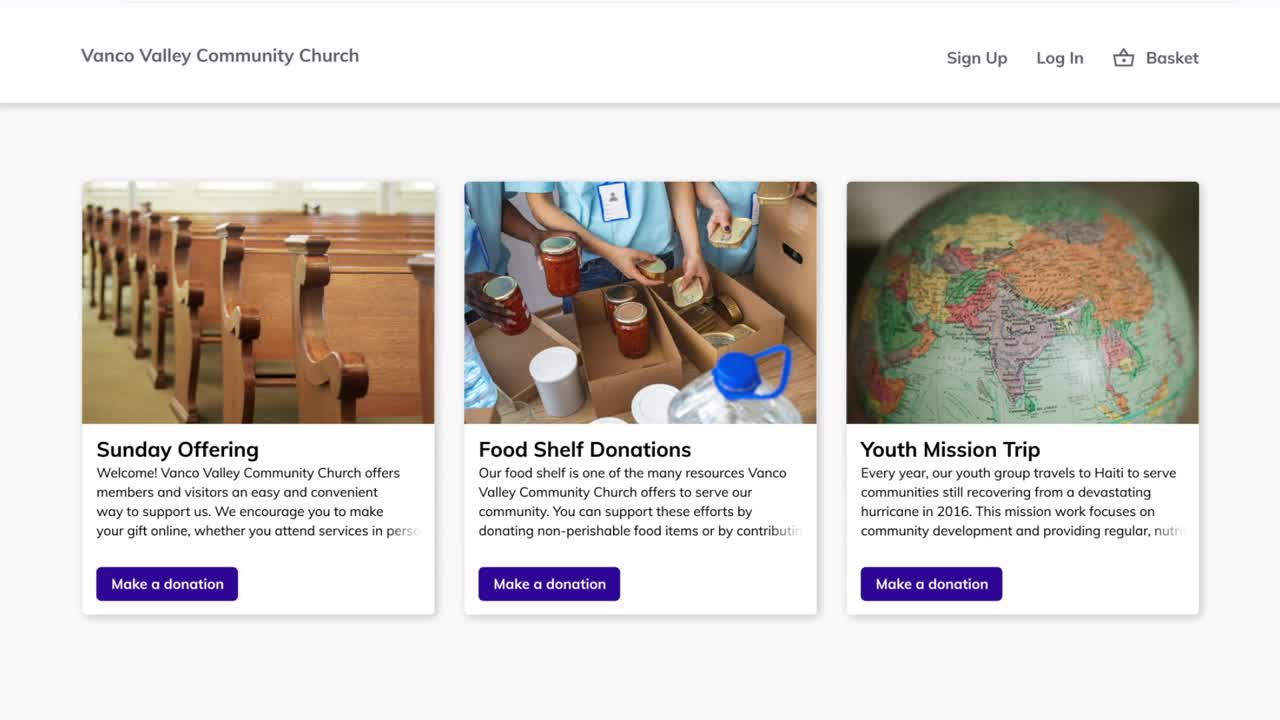
- Mobile apps developed by nonprofit organizations or third-party donation platforms enable donors to set up and manage recurring donations directly from their smartphones or tablets. These apps often offer features such as donation tracking, customization of donation preferences and secure payment processing to enhance the donor experience.
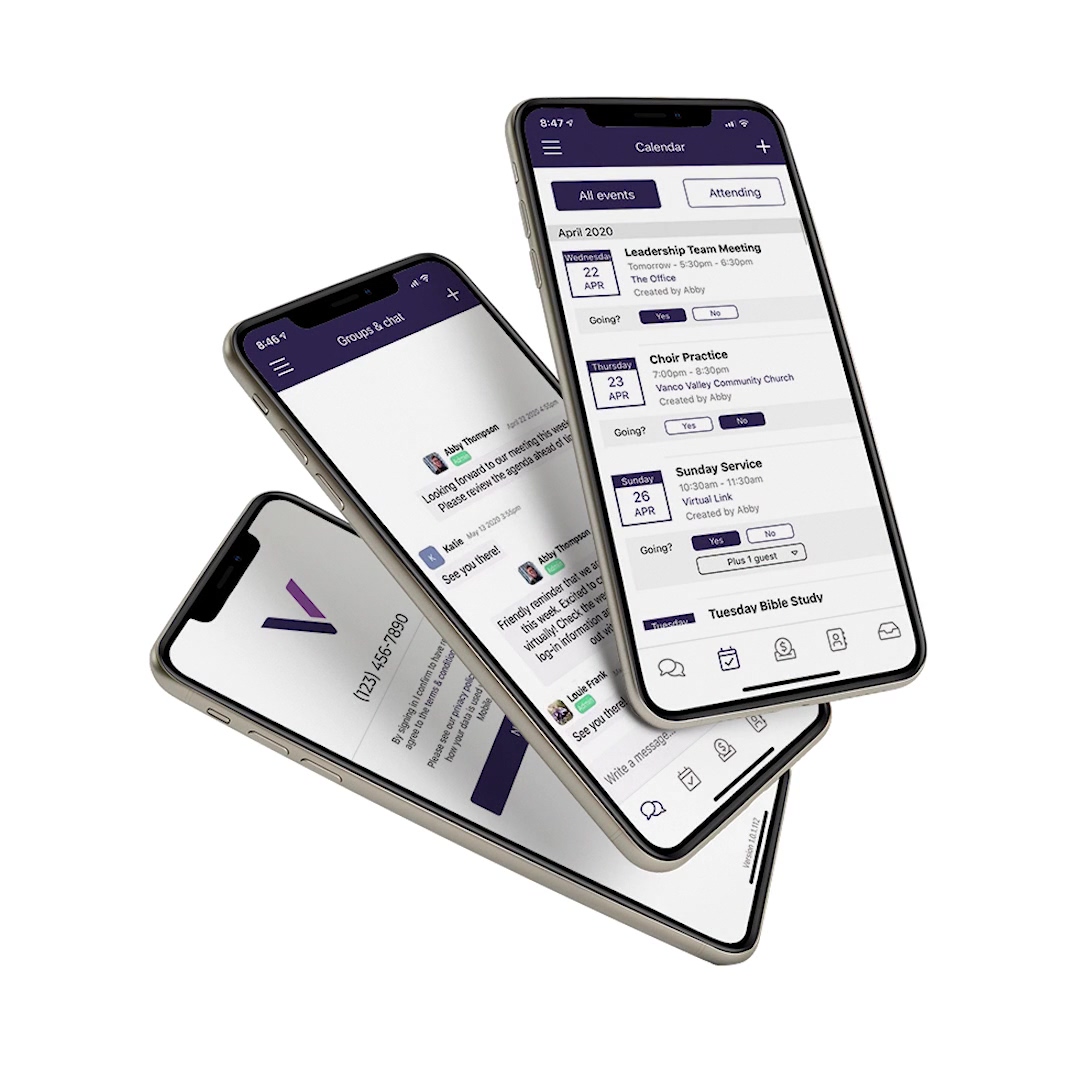
- Text-to-give services allow donors to initiate recurring donations by sending a text message with a specific keyword to a designated phone number. Donors receive a response with instructions to complete the donation setup process, including providing payment information and specifying donation preferences.
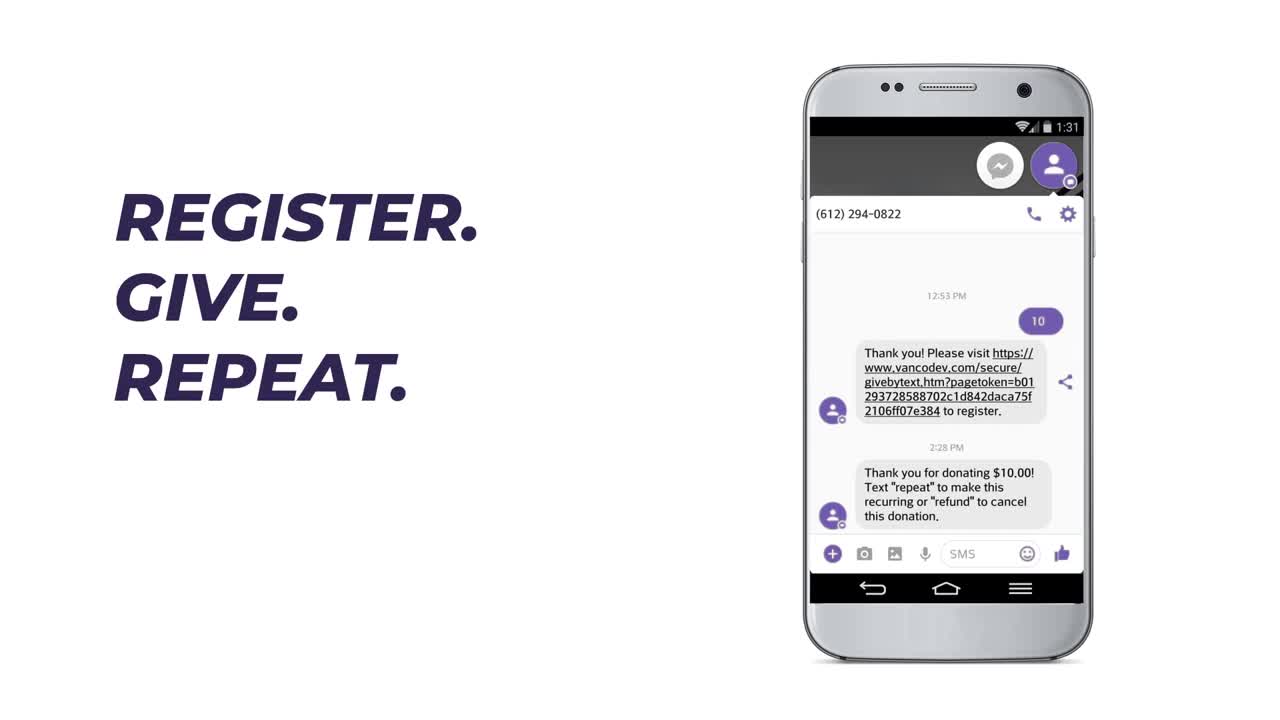
Strategies for Encouraging Recurring Donations
Nearly 80 percent of American adults prefer to manage their finances online. Lean into this trend and use online fundraising tools and platforms that cater to modern preferences instead of relying on more sporadic financial commitments.
Adopting and promoting recurring monthly contributions is enough for many churches to get the ball rolling. Your finance department should communicate the convenience of recurring donations, emphasizing that donors can set up automatic contributions that fit their budgets and schedules without needing regular manual donations.
However, here are some strategies that can make recurring giving even more attractive to donors.
Educating Your Congregation About Recurring Giving
The following faith-based fundraising strategies ensure your congregation understands recurring giving and its importance.
- Talk about the importance of recurring church giving from the pulpit: Recurring giving should never dominate your sermons, but it may be mentioned regularly. Remind your congregation that their church member contributions support essential goals. Explain how they can easily set up regular donations.
- Create short explainer videos of visual guides: Setting up recurring donations should be easy, but short explainer videos ensure everyone understands the process. It lets them know how simple it is. Include them on your website near your donation forms to eliminate confusion.
- Host a "Generosity Sunday": A Generosity Sunday can do more than collect donations that day. It can encourage people to sign up for recurring donations through your website. You may even have a computer available at the event so people can sign up live.
Promoting Recurring Donations

Any channel you use for marketing can encourage recurring donations. Here are some examples.
- Website: Your website is an excellent way to attract recurring donations. Use search engine optimization (SEO) elements to attract visitors. Then, place donation buttons at strategic locations on your website that take donors directly to your donation page.
- Email Campaigns: Set up campaigns to solicit donations for a specific cause. Include links that connect to your donation page. Develop an email series that educates and inspires over time. For example, week 1 can explore the biblical importance of giving, week 2 can share a powerful testimony, week 3 can explain the giving process... and so on.
- Social Media & Church App: Social media is an excellent way to encourage donations from your followers. You can also connect your church giving platforms with your church app so people can use it to donate. Use success stories, hashtags, testimonials, inspiring graphics, and reminders to promote congregation donations.
- Bulletins and Announcements: Bulletins and announcements typically update members with church news, such as events, new projects and recently achieved goals. They can be distributed via email, posted on the church website and hung on church bulletin boards. Each should include a gentle reminder to donate.
Once someone shows interest in donating through digital or in-person methods, the onboarding flow is crucial. Have a clear, simple process ready, including a dedicated landing page with clear instructions, video tutorials showing exactly how to set up recurring giving, immediate confirmation, and thank you messaging that reinforces their decision.
Craft Specific Appeals
Specific appeals can help generate recurring donations- with the emphasis on 'specific'. Your appeal will be more compelling with the following strategies:
- Quantify the Impact: Instead of saying, "Your donation will benefit our youth ministry," say, "When 50 families commit $50 monthly, we can provide weekly youth gatherings, quarterly retreats, and summer camp scholarships to students who couldn't otherwise afford to attend."
- Emphasize the Multiplication Effect: Explain how $25 per month becomes $300 per year, and when 100 people make that commitment, it creates a $30,000 foundation for ministry. This helps people see how their seemingly small recurring gift creates a significant impact when combined with others.
- Offer Multiple Entry Points: Some appeals should focus on converting existing givers to recurring givers. Present it as a convenience upgrade: "If you're already giving $100 monthly through four separate transactions, simplify your giving by setting up a single recurring gift." When you get people to convert, you are more likely to achieve a steady income with more long-term benefits.
- Create Urgency Without Manipulation: Share specific ministry goals that recurring giving will support. For example, you may include language like "We need 40 new recurring givers by December to ensure our food pantry can maintain consistent operations through the winter months when demand increases by 30%." This approach creates urgency without implementing an overly salesy strategy.
Sharing Impact Stories to Inspire Recurring Giving
People want to know they’re giving to a worthwhile cause. Impact stories show that donations go to good use. Here are some ways you can share them with your congregation.
Feature testimonials from members who have benefited from the church’s ministries.. Donations are often used to support church ministries. Therefore, testimonials of anyone who has benefited from these ministries show the positive impact of donations.
- Testimonials can come in text or video, although video is more engaging. You can place testimonial videos on your website, email them, post them on social media and include them in other marketing materials. When recording testimonials, choose members who have been active with recurrent giving for at least six months. Record short clips, about 60-90 seconds in length. You may also ask these donors to speak about their experiences during service.
- Real-world examples show how donations can support church missions, activities, and programs. Create videos, blogs, and social media posts demonstrating how these videos help your congregation. Remind viewers that donations make it possible.
- Create short videos showcasing generosity's impact: Videos may be the best way to share impact stories. They use audio and video elements to tell the whole story. Statistics show that 87 percent of people perform the desired action after watching a marketing video. Make videos short, engaging and concise to ensure you reach your goals.
Provide Incentives or Recognition for Recurring Donors
Incentives and recognition will show donors you appreciate their generosity. Here are some recommended techniques.
- Public Acknowledgement: This includes exclusive updates, special events, or acknowledgment in newsletters or on the organization's website to show appreciation for their ongoing commitment.
- Regular Communication and Follow-up: Develop a set of donor email templates for easy communication, including a thank-you template, annual reminders, follow-ups for dropped payments and special communication for crowdfunding campaigns.
- Stay Engaged: Engage with recurring donors through regular communication, updates and gratitude expressions to maintain their connection to the organization and encourage continued support.
Communicate Recurring Impact
One of the most powerful drivers of recurring giving participation is consistency in ministry impact. When donors see regular updates on how their automated gifts are making a difference, they're more likely to continue and increase their support.
Here are some ways to implement this approach:
- A Thank You Series: Your thank-you series should go beyond the automatic receipt. Send personalized messages at one-month, three-month, six-month, and one-year marks. These messages should include specific ministry updates tied to the time period. For example: "Your three months of faithful giving have helped us serve 450 meals at our community dinner."
- Milestone Celebrations: Milestone celebrations create excitement and momentum. When you reach 100 recurring givers, celebrate publicly. Share what this collective commitment makes possible. Create visual representations like thermometer graphics showing progress toward recurring giving goals.
- Annual Reviews: Annual reviews provide positive reinforcement. Send each recurring giver a personalized annual impact report showing their total giving, the ministries they've supported and specific outcomes from the year. Include photos and stories that bring the impact to life. This isn't just about numbers – it's about transformed lives and kingdom impact.
- Monthly Impact Updates: Monthly impact updates keep the connection fresh. These don't need to be lengthy – a simple email with one powerful story or statistic maintains the emotional connection between the giver and the ministry's impact. For example: "This month, your recurring gift helped 15 children who couldn't afford the registration fee attend VBS."
Streamline the Process
Streamline the process for setting up recurring donations by offering user-friendly online fundraising platforms, mobile apps or text-to-give services that make it easy for donors to provide their payment information and specify their donation preferences.
Addressing Common Concerns About Recurring Giving
Recurring church giving is ideal for churches, but it can also cause concerns among members. Here are some common problems and how to deal with them.
Trust Concerns
Considering the increasing number of cyber incidents, some people may be reluctant to share their financial information over the Internet. Churches can solve this issue with a PCI-compliant platform that utilizes features like:
- Strong passwords: Choose passwords that are difficult to guess and need to be changed frequently
- Encryption of cardholder data: Cardholder data should be encrypted so it appears as code when viewed by unauthorized sources.
- Firewalls: Firewalls monitor incoming and outgoing traffic to ensure suspicious communication does not reach the network.
- Access Controls: Churches must ensure sensitive information can only be accessed on an 'as-needed' basis.
- System Updates: Systems should be updated regularly to meet the latest security standards.
- Risk Assessment: Churches should assess systems regularly to identify vulnerabilities and reduce risks.
Churches can inform customers that they protect sensitive information by purchasing SSL certificates. The browser title will appear HTTPS instead of HTTP, letting donors know the system is protected. They may also include a statement letting donors know they are donating through a secure site.
Flexibility Concerns
Donors may also be concerned that they won't be able to cancel their payments. They may think the church will continue billing them once they subscribe, even when they no longer wish to be billed. Churches can make donors feel more confident by offering options to cancel, pause or modify donation amounts anytime.
Distrust of Automation
Some people distrust automation and feel it removes intentionality from spiritual giving. Address these concerns by explaining that automation is a spiritual discipline that ensures faithfulness and increases intentionality through an upfront decision to support God.
Once churchgoers come around, they tend to appreciate the convenience automation offers. Our churchgoer giving study of 1,000 participants revealed that 69% of respondents indicated they would willingly pay an additional 2-4% to cover processing fees. This demonstrates that givers value convenience and consistency.
Offer Options to Give in Person
Some people may have been burned through online giving before and prefer to give in person. Make giving easy for those people by letting them know precisely when and where to donate. You may also offer hybrid options so people can enjoy the best of both worlds.
How Can We Convert One-Time Donors Into Recurring Givers?
Churches can attempt to get new donors to give to their organization, but their efforts may be more effective if they try to convert one-time donors into recurring donors. They will reach out to people who are already interested in their organization, saving time and money. According to an Outbound Engine study, the success rate of selling to a customer you already have is 60 to 70 percent, while the success rate of selling to a new customer is 5 to 20 percent.
So, the question is, how can you convert a one-time donor into a recurring donor? Here are a few possible solutions.
- Send a thank-you email within 24 hours of receipt: Part of the satisfaction of giving is knowing that your donation was appreciated. Sending a thank-you email shows you are grateful. Automate the process to ensure emails are sent promptly and no donor is overlooked.
- Personalize messages: A thank you personalized with the donor's name and the cause they donated to will seem more heartfelt. You may also ask if they want to turn their donation into a monthly gift.
- Follow up with gentle reminders and stories: Continue communicating with donors. Make them aware of the impact their donations have made. Explain what projects you’re currently working on. Each email should remind them that recurring church-giving options are available.
Highlighting the convenience and impact of recurring donations
Gentle reminders can be effective, but occasionally, you may want to get more direct with specific information on how much recurring church donations can help. Consider writing a blog or sending out a newsletter with the following information.
- Explain how effortless church recurring giving is: Provide an explainer video, text, or images showing how easy it is to set up recurring donations. Ensure donors understand it's a set-and-forget process once recurring donations are implemented. You may also mention that your church software is secure and donations can be canceled anytime.
- Use data points: Let donors know how valuable recurring donations are in helping the church fund programs that support the community. Statistics are ideal because they are presented as facts and increase transparency. A Vanco study reveals that recurring donors give 120 percent more than nonrecurring donors. You can use this statistic to demonstrate the value of recurring donations.
- Include a visual infographic demonstrating long-term impact: People may quickly get bored with numbers. A visual infographic will ensure they digest the information you’re providing.
Offering Incentives or Special Recognition for Setting Up Recurring Gifts
Churches may inspire recurring online church donations by offering special incentives or recognition. Here are some practical reward suggestions.
- Feature Recurring Donors in Newsletters: Designate a special section of your newsletters to recognize people who sign up for recurring donations or make sizable donations to your church. People may want to give, knowing they will receive this recognition. If you plan to mention someone in your newsletter, get their permission first to avoid unpleasant situations.
- Offer Perks: Churches may also offer perks to members who sign up for recurring donations. For example, they may allow them to pre-register for events or receive VIP treatment at these events for no additional cost. Churches may also provide exclusive updates on project progress and other church news to reflect their gratitude.
- Matching Gift: With this system, a church sponsor matches donor gifts, doubling the church's revenue. The matching amount is typically limited. Donors are often inspired to give, knowing their donation has more impact.
How Can We Measure the Impact of Our Recurring Giving Program?

Churches should measure the impact of their recurring giving programs to determine what's working and what's not. This involves tracking key metrics, which are as follows.
Tracking Key Metrics for Recurring Donations
- Monitor recurring church giving donor retention rates: Recurring donor retention rates measure engagement levels. Are your donors interacting with your emails and social media? High engagement leads to increased retention and long-term giving.
- Track average monthly church donations per donor: Churches should keep track of donations from recurring and nonrecurring donors.
- Identify drop-off rates: Churches must also consider when donors cancel or pause their giving. They can determine if the reduced income is related to specific incidents or changes within the church. The church may be able to avoid similar occurrences in the future.
Analyze Donor Retention and Average Gift Amounts
- Compare one-time vs. recurring donor lifetime value: Recurring donors typically have a higher lifetime value. However, some recurring donors may be outdone by large gifts. Churches need to cater to their most significant sources of income.
- Segment donors by frequency and amount: Segmenting donors by frequency and amount can help churches create more personalized marketing materials. For example, they may notice that the amount and frequency are directly related to specific demographics. They can tailor their communication accordingly to make it more engaging.
- Use Exit Surveys: Churches must determine why donors pause or cancel their giving to avoid similar occurrences in the future. The best way to do this may be to provide exit surveys that pop up immediately after the donor cancels. They may offer insight beyond data collection and feedback on church improvements.
Using Data Insights to Refine and Improve Your Recurring Giving Strategy
- Identify trends in giving behaviors and adjust appeals accordingly: Data can provide insights into giving behavior, allowing churches to adjust their appeals. For example, if they notice inflation impacts giving, they may use an appeal like, "Every penny counts." If cyber events impact giving, they may mention the church's secure giving features.
- A/B test different email elements: A church's marketing approach can also impact giving. Churches can use A/B testing to determine which aspects of their marketing materials connect to customers and which turn them off. Small changes in subject lines, calls to action and donation form designs will help you pinpoint what's working and what's not.
- Implement donor feedback: Data helps identify what's leading to various customer behaviors, but feedback provides more direct communication. Churches may consider sending out feedback forms, including automated forms on their website, or printing out physical forms to leave around the church to learn about donor favorites and pain points.
Implementing Recurring Donations with Vanco

Ready to get started with recurring donations? First, you need to choose the right donor management software. Choose a fundraising platform that works with various payment solutions, is secure, integrates well with your current software and offers easy payment processing. Vanco's Giving Platform may be the best solution.
Features of Vanco’s eGiving Platform
Vanco’s fundraising software makes it easy to accept monthly payments. Our giving platform includes a suite of easy-to-use features, including:
- Online giving pages
- A customizable mobile app for churches to make mobile giving easy
- Event ticketing
- Text-to-give
- Integrated in-stream online giving
- Credit card swipe reader compatibility
These powerful features are intuitive and simple to use, regardless of how your members choose to give.
Integration with Church Management Software
At Vanco, we understand that integration with existing management systems is key for any donor management software. Our platform integrates with over 60 church management software providers to streamline donation reconciliation.
Customization and Branding
Every church has its own mission and identity. Vanco makes it easy to personalize your giving pages and add links to your church’s website. You can even embed your giving page within your own website to create a cohesive donor experience.
Security and Compliance
Your donors’ financial safety depends on their monthly payments being secure. How often have you heard of a payment processing solution getting hacked and financial information compromised? Vanco is a PCI Level 1 service provider, meaning your church’s precious financial data is protected by the highest security standards.
Setting Up a User-Friendly Donation Form
The first step is to set up a user-friendly donation form. Here are some processes that will support your goals.
- Keep it simple: Avoid overly long forms that people won't want to complete. Eliminate unnecessary fields to make donating easy.
- Mobile-optimized design: Statistics show that 25 percent of donors use mobile giving apps. Ensure your donation form is mobile-friendly by creating large fields that are easy to fill out on mobile but don't overwhelm the screen. Create a responsive design that adjusts to various screen sizes. Enable auto-complete on fields like address and email to make it easier to complete forms.
- Offer clear options: Allow users to check boxes rather than fill out their information to speed up the process. For example, you may create boxes for one-time and weekly, monthly or annual recurring church-giving. Include preset amounts like $25, $50 and $100. In addition to making the process more convenient, preset amounts can encourage more significant donations.
- Provide a clear confirmation and thank you message: After the donation processes, ensure your system displays an explicit confirmation so the donor knows their donation went through. Platforms should also send a thank you message to their email to show appreciation and encourage ongoing loyalty.
Offer Multiple Payment Options for Recurring Gifts
People will also be more likely to give if they know they can use their favorite payment options. Offer various credit and debit cards choices and mobile wallets like PayPal, Google Pay and Apple Pay. You should also include ACH transfers, which are advantageous to churches because they offer low processing fees.
Churches should also provide clear instructions so people can easily cancel their subscriptions if they so choose. Although a cancellation is never a desired outcome, people will feel more confident signing up for recurring donations, knowing they can opt out whenever they choose.
Success Stories
Monthly givers donate 440-percent more over their lifetimes than one-time donors, and Vanco has helped thousands of churches harness that powerful philanthropic drive for themselves. But you don’t have to take our word for it – you can see how real users compare us to other platforms in our Capterra reviews.
Trinity Lutheran Church in Moline, IL, found that Vanco is very responsive to questions. Their administration appreciates the pre-made advertisement templates that Vanco provides and notes that even though the church’s congregation skews older, they have had a steady increase in recurring donors. Check out this in-depth case study to learn how they've grown giving. Vanco allows members of all ages to set up recurring donations to support the causes they choose when they choose.
For a more in-depth look, explore the Lexington Park UMC case study to see how Vanco’s online donation platform encourages recurring donations.
Case Study: Average online giving increase of 159% in five years
Here's another one of Vanco's users talking about the big impact it had on her church.
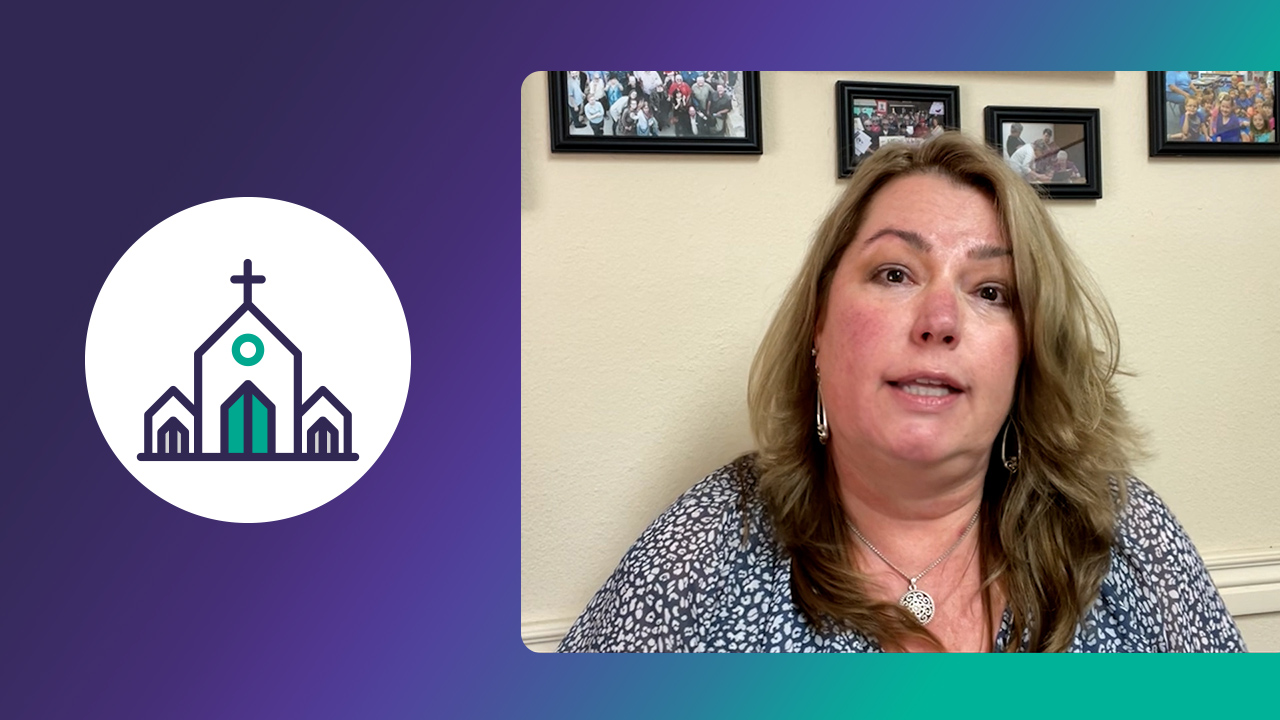
Key Takeaways: The Future of Giving in Faith-Based Communities
Recurring giving is more than just receiving monthly payments. It’s a way to extend the donor life cycle and make it easy for your churchgoers to give money to the causes they support.
Recurring donations create a reliable revenue stream. When coupled with special fundraising events like crowdfunding campaigns, they can help keep your ministry going for years to come.
You don’t have to figure out how to run recurring donations on your own. Vanco can help you every step of the way, from getting started to payment processing. Make giving easier for your staff members and volunteers by integrating software for recurring giving into your donation options.
FAQs

What are the tax benefits of recurring donations for donors?
Recurring donations may offer tax benefits to donors because they can deduct their contributions from their taxable income if they itemize deductions, similar to one-time gifts.
How can churches encourage donors to switch to recurring giving?
Churches can encourage donors to switch to recurring giving by highlighting the impact of sustained support on their ministry, offering incentives like exclusive updates or recognition, and making the setup process easy and convenient.
What is the difference between recurring donations and one-time gifts?
The main difference between recurring donations and one-time gifts is the frequency of contributions, with recurring donations occurring regularly at predetermined intervals, while one-time gifts are made as single, standalone contributions.
How does Vanco protect donor information?
Vanco’s payment solutions protect donor information through secure encryption methods, compliance with industry-standard security protocols, and regular security audits to ensure data integrity and confidentiality.
What support does Vanco offer for setting up a recurring donation system?
Vanco offers support for setting up a recurring donation system through personalized customer service, online resources and tutorials, customizable donation forms, and integration with various payment processing options to meet the needs of nonprofit organizations.
Unlock the Secret to Successful Stewardship: An Unmissable Guide for Every Church Leader
The topic of money and giving money to the church can be tricky terrain for church leaders. Yet at its core, stewardship is about empowerment, community and growth. With this perspective, we've developed an eBook that reframes this delicate conversation into an empowering discourse.
Our guide will…
- Help you tap into your congregation’s natural desire to contribute.
- Reveal eight fundamental rules of financial stewardship.
- Showcase 11 untapped revenue sources that could catalyze your church's financial health.
- Detail a foolproof blueprint of 17 key elements to design the perfect stewardship plan.
Transform how you approach stewardship and unleash the power of giving with our breakthrough eBook.




